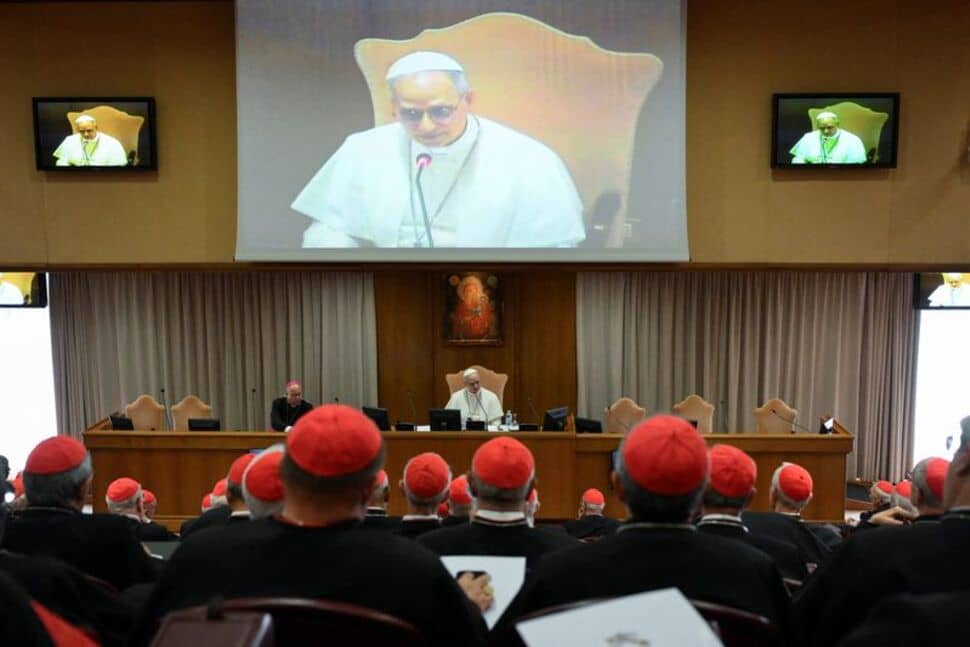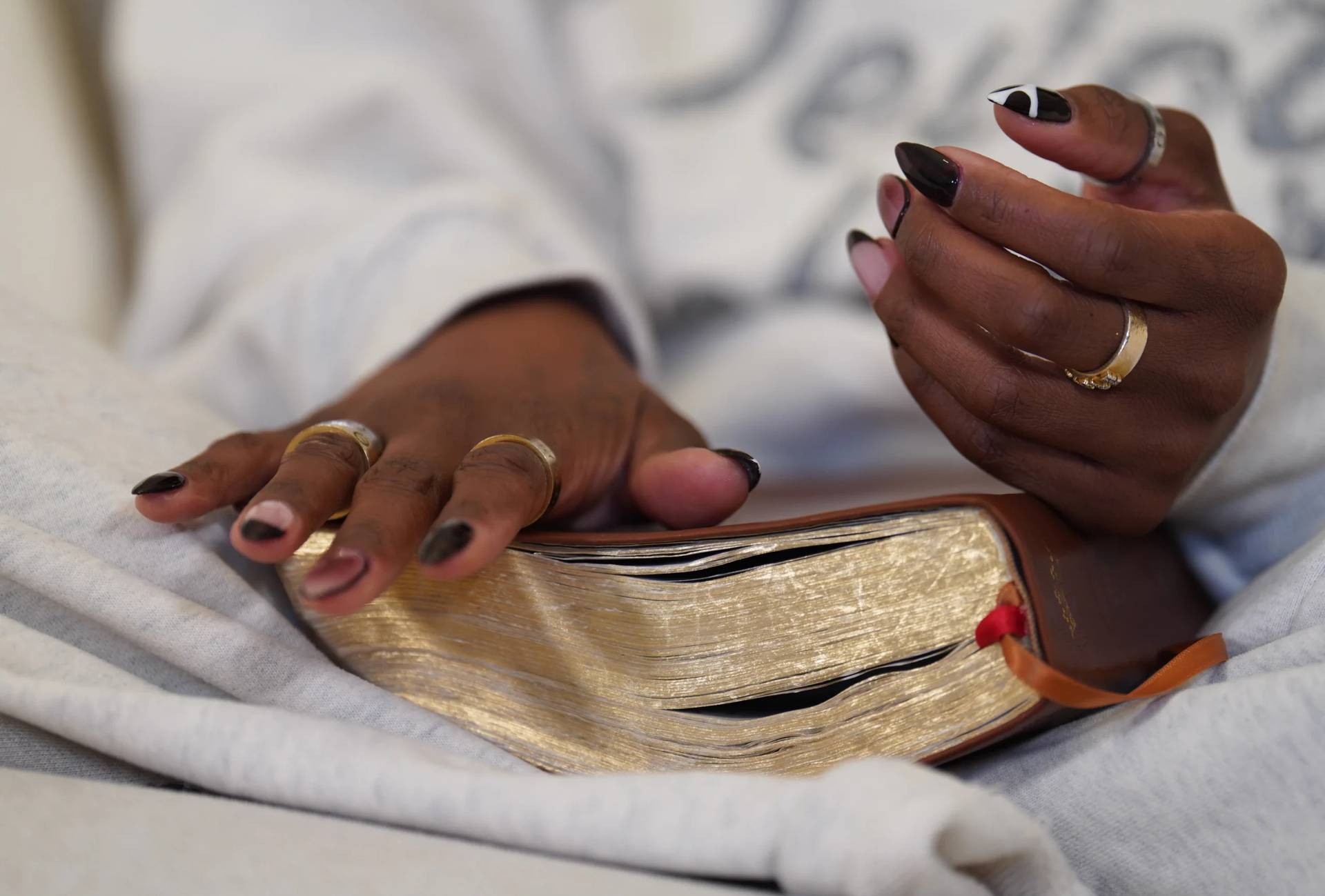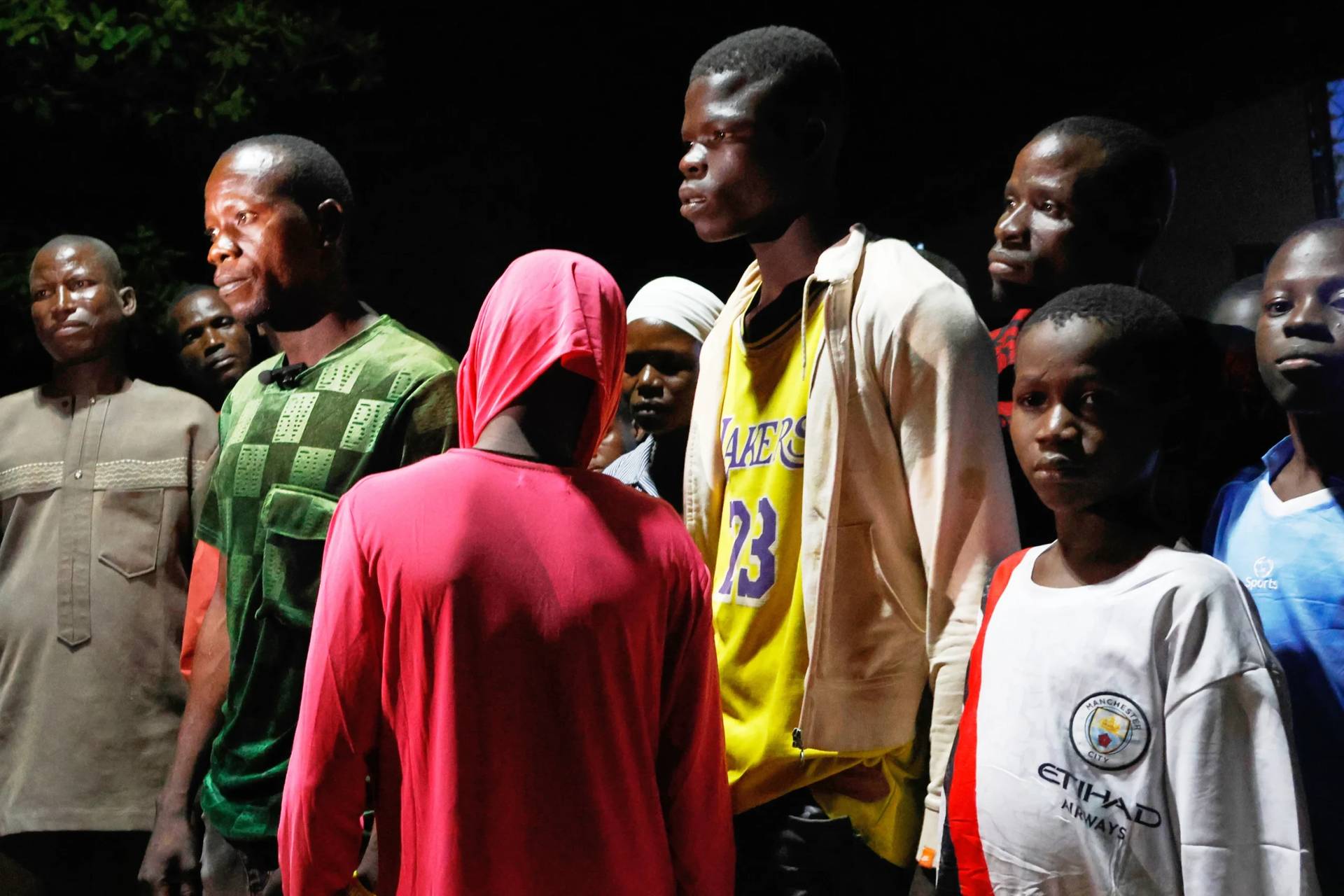Earlier this week, while riding one of New York City’s public buses, I looked up to see one of the Sisters of Life in her blue and white habit seated a few rows ahead of me. This sister, whose name I would later learn is Sr. Benedicta, sat smiling at a restless toddler across the aisle from her.
The scene, simple as it was, reminded me why the Sisters of Life have long been among my most favorite of religious orders. Their witness is one that takes place in the heart of the cities they inhabit, as they ingratiate themselves in the lives of those in need—particularly mothers and children—and invite them into the lives of their religious community.
Such a scene served as an appetizer of what I experienced the following day on June 1, when the Sisters of Life celebrated their 25th anniversary mass in New York’s St. Patrick’s Cathedral before a packed congregation of priests, religious from other communities, benefactors, and yes, mothers and their restless toddlers.
It was a visible testimony to the fact that this young order is among the most vibrant in North America.
During his homily, Cardinal Timothy Dolan proudly summarized the work and joy of the Sisters of Life as “a booster shot for all of us.” In doing so, however, he harkened us back to the time of the Sisters founding twenty-five years ago.
“We worried that consecrated religious life was in trouble,” Dolan admitted, and “would the witness of religious sisters be a forgotten memory?”
Fast-forward a quarter of a century later, and through “the advent of the Sisters of Life,” God reminds us that “renewal and rebirth are expectant words in his thesaurus,” remarked Dolan.
On November 2, 1989, New York’s Cardinal John O’Connor titled his regular column in the archdiocesan newspaper Catholic New York “Help Wanted: Sisters of Life.” The mission of this new order would be two-fold, both contemplative and active.
In addition to the standard vows of poverty, chastity, and obedience, these new Sisters would take a fourth vow “to protect and enhance the sacredness of human life.”
And so it began twenty-five years ago, when eight women officially entered the new order, which has now grown to almost 100 women in New York, Connecticut, Washington, D.C., Denver, and Toronto.
Every year these Sisters help nearly one thousand pregnant mothers, providing them with practical and spiritual support. Over ninety percent of the women they enter into contact with go on to keep their babies, as they offer proof of what real choice for women really looks like.
Many of these women and their newborn children live with the Sisters in one of their convents—and go on to receive care and help long after they’ve moved out. Yet their ministry isn’t limited to expectant mothers. They also have an active ministry for post-abortive women and serve as coordinators for New York’s Family Life/Respect Life Office.
The Sisters are a constant presence at the annual March for Life in Washington, D.C.—and practically any gathering of the pro-life cause taking place in the United States.
At World Youth Days in Madrid and Sydney, they’ve been responsible for programming and venues that were visited by over 20,000 pilgrims a day. On these occasions, they’ve matched the chaos, the bitter cold in D.C., and the heat in Madrid with a ceaseless joy and grace, enough for anyone who crosses their paths to comment that they are more than sisters, but living saints.
So confident is Dolan in the future of the Sisters of Life that he took the liberty of inviting those in attendance to the next anniversary celebration on June 1, 2041. The fiftieth anniversary mass, he anticipated, would take place not in St. Patrick’s Cathedral but in Yankee Stadium, which would be filled to capacity with women and their babies who have grown up to become adults.
Thinking back to my sighting of Sr. Benedicta on the bus, there was something that resonated with me about Dolan’s prediction. This mass at the newly restored Cathedral on Manhattan’s Fifth Avenue was stunning and equally reflective of the beauty of the work of the Sisters.
And yet at the same time, I couldn’t help but thinking of how fitting it would be to gather in Yankee Stadium in the Bronx—the backyard of troubled families and neighborhoods that have served as a field hospital for these Sisters, just like the everyday women and children on that public transit bus.
There, in the Bronx, where New York’s already high abortion rates reach almost fifty percent and crime and poverty statistics are among the highest in the United States, a place riddled by death and despair could be given new hope from the Sisters of Life.
As we gathered at Mass, Dolan took us back to another recent memory, where this past September Pope Francis stood in the very same spot and went out of his way to laud the work of the religious women in the United States.
“What would the Church be without you?” he asked.
The work of the Sisters of Life reminds us that both the Church and the world are a much better place thanks to the “yes” of those courageous eight women twenty-five years ago and all that have fearlessly followed in their footsteps.
How providential was the “historic dare,” as Dolan termed the inspiration of his predecessor O’Connor, to found an institution—an army some might say—of women who were dedicated to protecting human life in a city that all too often disregards it.
And in the spirit of Pope Francis, who has dedicated much of his papacy to preaching against a throw-away culture, their very vows commit them to counteracting this on a full-time basis. Indeed, those who have benefited from the great gift of the Sisters of Life have not just experienced one Year of Mercy, but two and a half decades of it.












